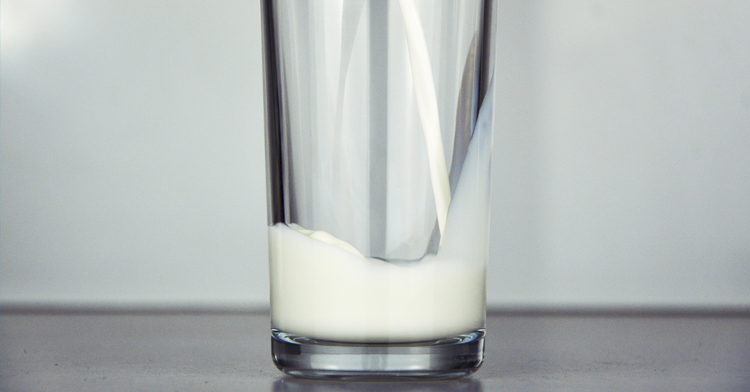
Do you know if you are lactose intolerant?
Lactose is the sugar in milk, present in some prepared foods and in all mammal milk that we consume: cow, sheep, goat and even human.
In our small intestine we have an enzyme called lactose, which plays an important role in the body when we ingest foods with lactose, as it is responsible for separating two molecules (glucose and galactose), so they can be absorbed by our body.
Lactose intolerance means that we have a lack of the lactase enzyme in the small intestine and, if we cannot properly digest lactose, it passes directly into the large intestine. There, it is decomposed by bacterial flora, causing a series of symptoms that may be quite irritating.
Lactose intolerance is more common than you may think, affecting a high percentage of the world population, almost 70%. You may suffer from it due to it being hereditary, acquired over time or temporarily.
The hereditary type (primary) causes us to gradually lose the ability to digest lactose.
The acquired or temporary type (secondary) starts to develop when there is damage to the intestinal mucus and can be caused by other pathologies or intolerances, such as: gastroenteritis, celiac disease, intestinal illnesses (chronic), malnutrition or malabsorption syndrome. Temporary intolerance is a consequence of an intestinal disorder, or may occur after treatment with antibiotics or in people who have undergone gastric emptying after a surgery.
Symptoms of lactose intolerance:
• Diarrhea
• Abdominal pain
• Flatulence.
• Swollen belly
• Spasms
• Smelly faeces
• Vomiting
• Weight loss
Is it the same thing to be intolerant to cow’s milk as being lactose intolerant?
No, it is not the same thing. Intolerance to cow’s milk is an allergy to milk protein and not to lactose. It usually appears at birth, especially in premature children, and can last until they are three years old. And lactose intolerance is the inability to digest the sugar in milk properly.
There are different levels of intolerances, and if you have some symptoms and want to know if you are lactose intolerant, there are several simple methods to find out, after first visiting your doctor:
• Lactose intolerance test
• Hydrogen breath test
• Blood test
• Stool acidity test
• Small intestine biopsy
• Genetic test
Lactose can be present in other foods beside milk, such as candies, gum, bread, cold cuts, desserts and even drugs. If you are intolerant or have symptoms that you may be, the best thing to do is to read food labels to avoid ingesting it. There are people who cannot tolerate milk, but can tolerate cheese and even ice-cream, because they have low intolerance levels. To get an idea, a 250 ml glass of milk contains 25 grams of lactose.
Milk is an essential food in the first years of life, but we can replace the calcium and vitamin D in milk by eating sardines, salmon, shrimp, cabbage and spinach, as well as many other foods.
The good news is that there are increasingly more establishments that sell lactose-free foods and offer other alternatives.

